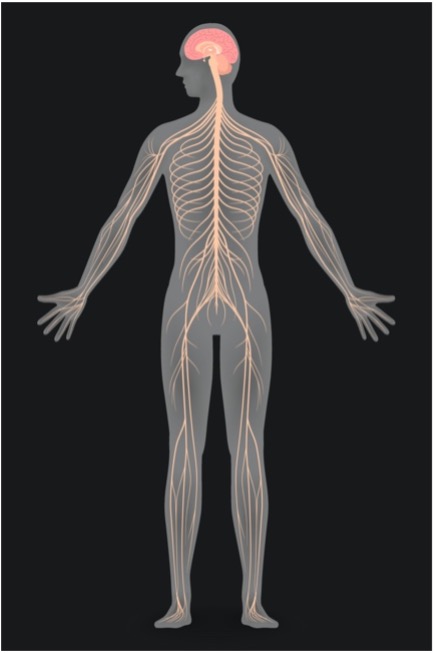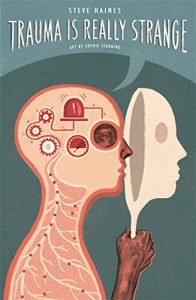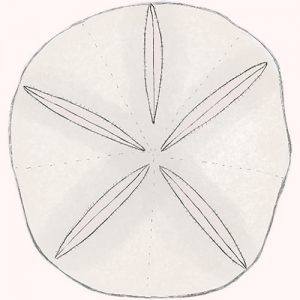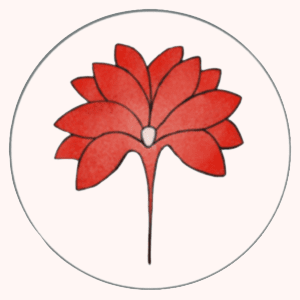A nervous system not activated by the past is a system in which we can enjoy life. We experience our mind and body resonating as one, in the present moment.
We respond appropriately to the ups and downs of life because our nervous system is no longer triggered by an outdated internal alarm system.
Stress is endemic in our society. We often work in stressful environments, with too much to do. We have families and commitments that add to a stress load we are already carrying from our childhoods. This stress load takes a toll on our nervous system.
To come into balance, we need support from people who embody this state of balanced regulation, and can facilitate deep healing states in others. Biodynamic Craniosacral Therapists offer a rich support for assisting the body to come into a deep sense of balance, discharging excess energy held within the nervous system.
Our Marvellous Nervous System
Our nervous system detects and responds to stimuli. It is highly adaptive and shaped through learning what happens as we interact with people and our environment.
Peace and balance are our natural state, our potential.

Our perception of safety or danger has a direct impact on the way many of the functions in our body operate.
Whilst the neural pathways developed as children are critical in shaping our nervous system, the neuroplasticity of our brain means this process is ongoing. We can change patterns in our nervous system.
The nervous system has both a voluntary and involuntary component. Our autonomic (involuntary) nervous system regulates many aspects of our physiology without our conscious awareness – neural pathways initiate responses automatically.
Our autonomic nervous system affects how the following organs function:
- Eyes
- Saliva glands
- Lungs
- Heart
- Gallbladder
- Stomach
- Intestines
- Sex organs.
Our autonomic nervous system has two branches; the parasympathetic and sympathetic. Our body is constantly changing, responding to what’s happening to us. There is a natural movement in and out of these branches as and when we need. It’s a dance based on our perception of what is happening to us – information that is detected below our conscious awareness.
Stress, Trauma and Our Nervous System
The level of stress we experience and our associations with stress-triggers affect how our nervous system responds to stimuli. Our neural pathways are based on what’s happened to us in the past.
When our nervous system perceives we are in danger, the related stress affects a lot of our organs. We experience an array of symptoms throughout our whole body.
We can have a system that oscillates between a hyper- and hypo-aroused state.
ONCE BITTEN, TWICE SHY
If we were once bitten by a dog (a traumatic event), when walking in a park, we may well interpret any barking or approaching dog as hostile. This association has become automatic, and we react rapidly and strongly. Our nervous system has declared we are in danger.
Our Responses to Danger
There are three stages to our response to perceived danger, depending on the situation:
- Defuse the situation (in social relationships)
- Fight or flight
- Freeze
Let’s look at these in more detail.

Steve Haines book on trauma is a great resource for understanding trauma and the nervous system.
1. DEFUSE THE SITUATION
According to polyvagal theory, the first thing we will attempt when we detect danger within a relationship, is to try and defuse the situation. We are social creatures and want to maintain social connection. We may avoid eye contact, or our hearing may become elevated or reduced – we have a physical response.
We will also do what we can within the relationship to reduce the sense of threat. For example, we might tone down what we say and how we speak to defuse the anger or to prevent an escalation of anger. We will behave in ways that make us feel safe.
A regulated nervous system is golden.
2. FLIGHT OR FLIGHT
The next thing our nervous system will do to protect us from danger is to activate a fight or flight response. This is a sympathetic activation. Our body will divert resources from activities like digestion, and release hormones that allow us to run. Our bodies pump more blood to help us get out of trouble or stay and fight. We go into a hyper-aroused state.
When hyper-aroused, we feel a mixture of agitation, anxiety, anger, unsettledness, restless or inability to sleep, and hyper-vigilance.
3. FREEZE
If we are in situations where we can’t soothe the social connection, and we can’t leave or fight, our system will feel overwhelmed. This often happens to children.
When we are overwhelmed, we freeze – we play dead like the mouse that couldn’t escape a cat. The impacts are that maybe the cat won’t be so interested in the mouse anymore, maybe the mouse won’t feel so much pain if it’s actually eaten. Freeze is our last option to cope with the event. Freeze is a parasympathetic activation, or a hypo-aroused system.
A hypo-aroused nervous system is in some sort of collapse inside. We might feel depressed, lethargic, confused, dissociated, and become numb to our pain. This is what our biology does; we can’t help that this happens.
Our Over-Stretched Nervous System
Our biology is not intended to cope with prolonged activation.
Consider the stress in our ordinary lives and the sheer number of stress-triggers to which we are regularly exposed (e.g. workloads, finances, families, COVID-19). Now add the past stresses from childhood and that’s a significant stress load.
Most of us have a stress load (including trauma) that has not been fully digested within our body. This means that when we perceive the same danger cues today, because there is an active association based on our past, we act as if historical dangers are present day threats. We have a physical response to this perception that is very personal.
Dr Libby Weaver refers to stress as an invisible load. It’s invisible because we get used to living in hyper- and hypo-aroused states – it becomes habituated in us.
HOW IS YOUR NERVOUS SYSTEM?
To start exploring how your nervous system is functioning you can ask yourself the following high-level questions:
Do you feel like you can stop everything you are doing and go into a felt-sense deep relaxation?
Do you have a felt-sense awareness of what is happening inside your body or are you dissociated?
Do you have the energy you need to get out of bed and enjoy your day?

Stress Symptom Checklist
This checklist allows you to self-assess by going through all the signs of underlying activation in your body.
Source: Ged Sumner, 2014, Body Intelligence Mediation
SYMPATHETIC ACTIVATION
Signs of sympathetic activations—fight, flights, or hyper-arousal:
- Faster respiration, which over time can become shallow breathing
- Quicker heartbeat and pulse (to supply blood to the larger muscles)
- Increased blood pressure (which can lead to high blood pressure symptoms and heart palpitations)
- Dilated pupils (which can lead to eyesight issues, particularly far-sightedness)
- Pale skin colour and long-term cold in your extremities
- Increased sweating
- Cold, clammy skin
- Decreased digestive processes (which can lead to irritable bowel syndrome and other digestive disorders)
- Tingling muscular tension: cramping and nervous tension
- Startle response: jumpiness and hypersensitivity
- Increased flexor tension (contracted body, especially in your arms and legs)
- Emotionally, sympathetic activation may be experienced as anxiety, panic, terror, aggression, and everything happening too quickly.
PARASYMPATHETIC ACTIVATION
Signs of parasympathetic activation—freezing, dissociation or hypo-arousal:
- Tonic immobility (your system can become limp and lacking in energy)
- Numbing
- Dissociation (reduced felt-sense awareness)
- Analgesia (you don’t feel pain in parts, or the whole, of your body
- Inability to move a limb, and dreams of not unable to move
- Inability to perceive the outline of your body
- Inability to feel your skin as a sharply-defined edge
- Sense of floating
- Sense of disconnection
- Low muscle tone
- Emotionally, a parasympathetic activation may be experienced as depression, withdrawal, a sense of unreality or not knowing, and lethargy.
Our Over-Stretched Nervous System
Do not underestimate the power of deeply relaxing.
Our body seeks to come back into harmony after a stressful event has passed. When we are carrying an invisible load of stress, it will take time to come back into optimal health – it’s as if we are recalibrating our system.
Shifts in our system need to be appropriately moderated, so these do not overload us (e.g. re-traumatise us), and we need to literally integrate the changes slowly so new levels of health emerge. That’s why going with the intelligence of your body is so effective – your body knows what and how much to process in any one session.
Biodynamic Craniosacral Therapy sessions are like dipping, and re-dipping, into a pool of calm that helps your body shed its stored trauma and held tension patterns. We transform from within. There is a cascade impact in your physiology over time.
Letting go of our traumatic past deeply relaxes our tissue body. Our nervous system becomes much more peaceful and balanced.
. . .

Begin Your Healing Journey Today with Inner Body Freedom
Discover more of your potential by deeply contacting your own health & wholeness.
